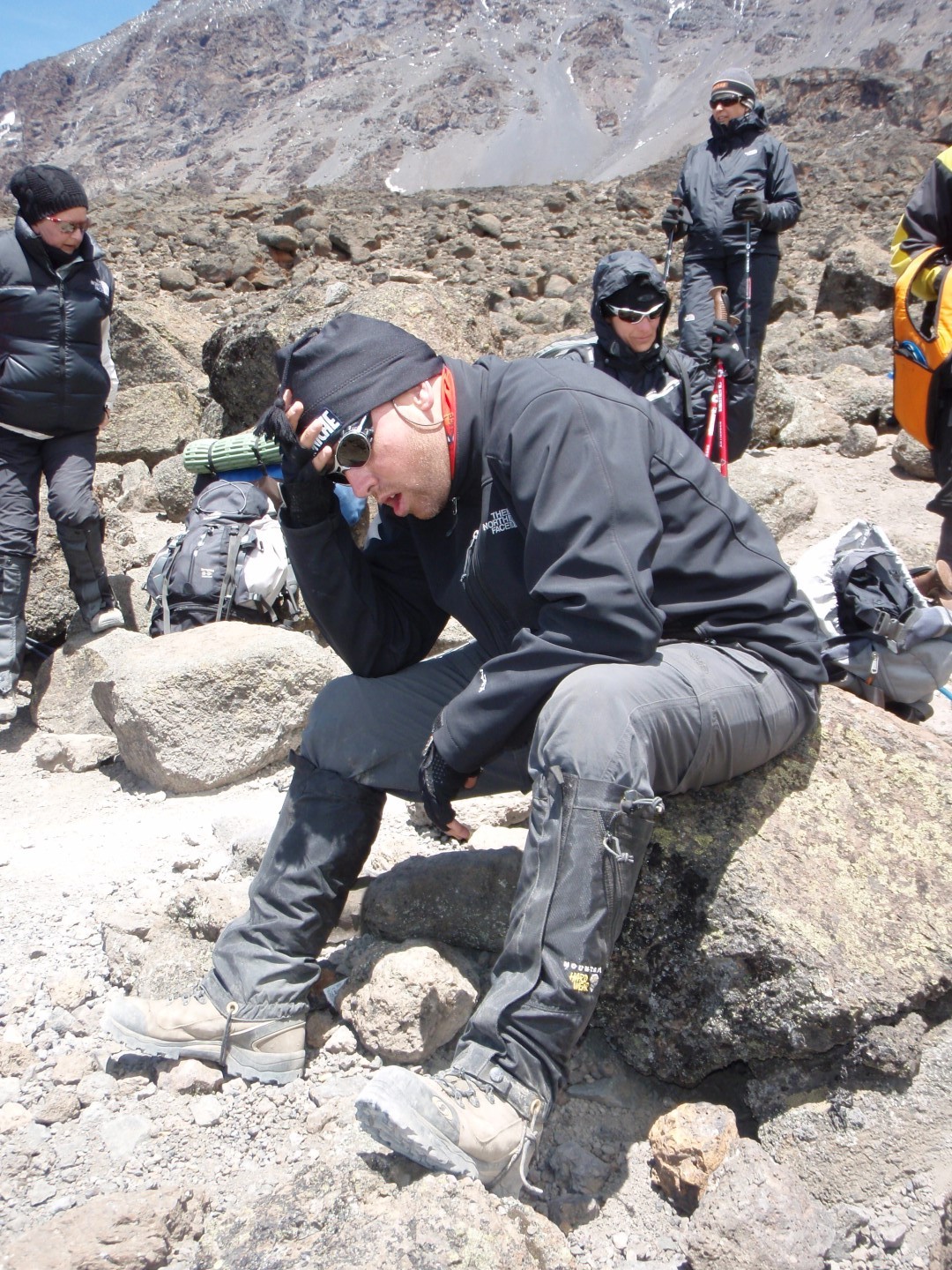AMS = Symptoms that occur when your body does not properly adjust to high altitude environments.
As you trek above 10,000 ft. your body is affected by the decrease in air pressure, resulting in less available oxygen. Your body can adjust, but it needs time. If you are not adjusting properly to the thinning air, you develop a variety of symptoms called AMS (Acute Mountain Sickness).
AMS symptoms can include:
- Headache
- Nausea
- Vomiting
- Lightheadedness
- Loss of balance
- Malaise
- Shortness of breath
The decrease in air pressure at high altitude affects everyone differently, and ironically, seems to hit the fittest people the hardest. This is because they tend to go too fast and don’t give their bodies enough time to adjust naturally to the thinning air.
TIP: Build in extra days on high altitude trips to allow your body more time to acclimatize naturally.
Your body’s ability to acclimatize depends on its ability to absorb available oxygen. This absorption rate is what sports scientists call your V02max. You may have good V02max or you may not – and it depends almost entirely on your genes. Aerobic training can help you a little (maybe by 5%), but the best technique is to climb slowly. Given enough time, your body will acclimatize.
V02max = measure of your body’s ability to absorb oxygen.
One other means of preventing AMS is to take a diuretic drug such as Diamox (Acetozolamide). Diamox forces the body to increase its rate and depth of breathing, thereby increasing oxygen content in the bloodstream. More oxygen in an oxygen-deprived environment is always a good thing.
TIP: Help prevent AMS by taking Diamox and ascending slowly.
The mainstay treatment of AMS is rest, fluids and mild analgesics: Tylenol, aspirin, naproxen or ibuprofen. These medications will not cover up worsening symptoms, but rather alleviate pain. Descent is always an option, and recovery will be rapid, but it is not necessary if you are adjusting. You may just need more time.
Treatments for AMS:
- Rest
- Fluids
- Mild analgesics
- Descent
It’s very important to recognize and treat symptoms of AMS before they progress to a more serious stage. The decreased air pressure at high altitudes allows excess fluid to accumulate in your body. Extreme retention of fluid is called edema, which can be either pulmonary (lungs), cerebral (brain), or peripheral (hands and feet).
Types of edema (extreme retention of fluids in the body):
- Pulmonary (lungs)
- Cerebral (brain)
- Peripheral (hands and feet)
Cerebral and Pulmonary edema can be fatal if not treated immediately. And the best treatment for cerebral or pulmonary edema is an urgent descent to a significantly lower altitude.
TIP: Recognize and treat symptoms of AMS quickly to prevent progression to cerebral or pulmonary edema.
It’s very important to observe what your body is telling you, and to respond immediately with treatment, whether medication, oxygen, descent, or all of it.
Remember, if you’re feeling poorly, it’s always altitude, unless proven otherwise.



